Adapted from an interview with Dr. Olivia Wilkinson, Director of Research at the Joint Learning Initiative on Faith and Local Communities
I’ve known Katherine Marshall for a number of years, and we’ve been working together on the ‘Religious Responses to COVID-19’ project since March. Our work is generally interested in working with multilaterals and bilaterals on their impressions of religion and development work. Because of that, and because the two of us have been having conversations around these topics since the beginning of the pandemic, I was chosen to host the session of the North America Regional Meeting that covered COVID-19.

The ‘Religious Responses to COVID-19’ Project
In February and March, when it became clear that COVID was going to be something big, a few of us began to gather news reports that related the pandemic to religion. It began as an email chain between Katherine Marshall, myself, and Dave Robinson, and it didn’t take long for us to realize that we were all separately doing the same thing.
We knew, based on what we’d observed in public health emergencies like Ebola and HIV, that faith actors were going to play a big role in the COVID-19 response. So we convened a conference at the Berkeley Center in early March, and the project was officially born. We decided to put together a central repository of information, then started sharing that information through daily emails—along with webinars, blog posts, event summaries, and other communication channels. We’ve now gone to weekly emails synthesizing the interesting pieces of the week, but we’ve amassed a vast repository of information.
What’s been amazing is that we’ve seen more reporting on the role of religion during this pandemic than in any other public health emergency. Compared to previous years where we struggled to make the case to humanitarian and development actors that religion is important, this year has been different. And I think that increased recognition owes something to the fact that development actors have become increasingly aware of the role of religion over the past five to ten years.
The initial reporting we gathered was very much on the negative effects of religion: religions going against public health measures, religions purposely disobeying, religions being responsible for super spreader events, etc. And with that, we immediately began to see coverage around the social dynamics of discrimination, with blame getting placed on certain groups in different countries around the world. There was a rush toward reporting the negative effects—a rush toward reporting the concerns—and it was a bit of time before we started to see more balanced reporting around religion. There weren’t many reports coming out to say ‘faith actors are doing food banks,’ ‘faith actors are hosting COVID testing centers in the parking lot,’ etc. And the unfortunate thing that happens in media representation is that when one group purposefully disobeys public health measures, they can become representative of a whole denomination or a whole religion. And that’s a little bit dangerous.
The repository so far consists mostly of news reports. As a researcher, I’m keen to start diving into the deep complexity of the ways that some religious actors have been responding. We see the breadth, which is exciting, but we have yet to see the depth that comes with quality research. In many ways, it’s just a result of the timeline—it’s only been so many months, and you can’t reach that level of in-depth research in that time.
Lessons on Government Interaction with Religious Communities
When it comes to how governments have been interacting with religious communities during the pandemic, there’s a full range of responses. On the lowest level, there are the cases of no interaction and dismissal—whether because of ignorance that faith should be at the table or because of purposeful choices in political systems that emphasize divides. Then there are medium-level interactions, where there is some input. And perhaps on this level there was a lot of initial interest in governments working with faith actors, but it’s waned over the past few months. Last, there are the higher levels of interaction, which include more regular communication through established channels. But I what we’re seeing, even in those cases, is that the effective interactions are connected more to certain departments than they are to the government as a whole. Sometimes one of the government departments is particularly strong, and often the success is just reliant on certain people in those departments and their relationships.
There’s a lot still hanging in the balance when it comes to engagement between governments and faith actors in the COVID response. I think there will always be trends where the most local and marginalized faith actors aren’t being represented, even when there is a space at the table for faith actors to meet governments. It’s the larger actors that are better able to represent themselves, and that creates a little bit of imbalance in the picture.
At the G20 Interfaith Forum this government-faith engagement is a particular interest area, and I think there are many examples that can be analyzed for good strategies. Those are often exhibited by people inside government departments who did some sort of mapping or landscaping before they got to a crisis point in order to understand who their valuable partners would be. Along with that, it’s important that governments know where the faith-based health facilities are and where the different social services are that are going to be able to support people during a crisis response. As we know, sometimes it’s not actually the disease itself that’s the barrier—it’s the lockdown measures that are impacting people’s lives. So, I think there’s a real case for preparedness—for relationships to be established before the crisis, and for faith engagement to be part of the strategy before crises happen.
I think the success of faith and government interactions also heavily depends on trust in government and trust in the response. For example, Canada and New Zealand largely trusted their government’s public health decisions when COVID-19 responses began. There was a certain level of faith engagement, but more than that, there was this general atmosphere of “they’re trying their best, we’re making good decisions, we’re talking to each other, at least semi-regularly.”
The anecdotal examples from the US at the North America meeting, however, were very different. It wasn’t so much a question of whether or not there was government engagement. It was more a question of “who is the government engaging, and who are they purposely not engaging,” where inequalities within society are being reflected within different faith communities. In the end, engagement with government is just part of people’s sentiment towards the government in general. If you’re pro-administration, you’re going to feel inclined to engage and vice versa.
Religious Groups and the COVID-19 Vaccine
Without being able to predict the future, our suspicion in the working group was that the COVID-19 vaccine is going to be one of the most pressing issues in the coming months. Throughout the pandemic response, we’ve seen different issues arising at different times. Right at the beginning, we were all concerned about adapting religious gatherings: “Are we going to close down? Are we going to have hand-washing stations?” Then we got into a little more complexity and diversity, with some faith actors being involved in domestic violence responses as it became a rising issue.
It’s relatively clear that in the next few months, the next big wave is going to be the question of vaccination. In religion and development history, religious leaders have been hugely influential in vaccination campaigns. Look at Polio in Nigeria for an immediate and clear example of religious leaders turning the tide in helping vaccination acceptance.
We have knowledge from previous examples that the trust, influence and authority religious leaders possess is incredibly influential. However, religious leaders can also be prone, potentially, to misinformation and to spreading vaccine hesitancy as well as acceptance. For anyone that’s working in the humanitarian development world or the public health response, it’s a very obvious statement that faith communities are going to be one of the major groups to engage around vaccination. And within those faith communities, you’ll find the full spectrum of attitudes, from acceptance to hesitancy. It’s not homogenous.
There are examples from the past of ways to work on these issues that could be very useful as we go into this next period. If you zoom into the details of any situation, it’s always more complicated than you think it is. Therefore, it’s worth taking the time to understand common complications and misrepresentations, especially if you’re designing a public health response or thinking about health messaging. It definitely seems that this is going to be an important issue—one in which faith communities cannot be avoided.
I think my main takeaway for government leaders is actually around this vaccination point. I feel that with the timing of the G20, and everything that’s coming up right now, that is the one most important point to understand, in context.
There’s really no aspect in which faith actors are not involved in the COVID response. There’s no aspect in which they’re not problematic. There’s no aspect in which they’re not also representing the best practices in some cases. So in a government response, you cannot avoid engaging with faith actors. The complexity is not a reason to avoid it. It’s actually a reason to lean into it and understand it better.
– – –
Dr. Olivia Wilkinson is the director of research at the Joint Learning Initiative on Faith and Local Communities. Her research focuses on secular and religious influences in humanitarian action, and she is the author of “Secular and Religious Dynamics in Humanitarian Response” (2020).


